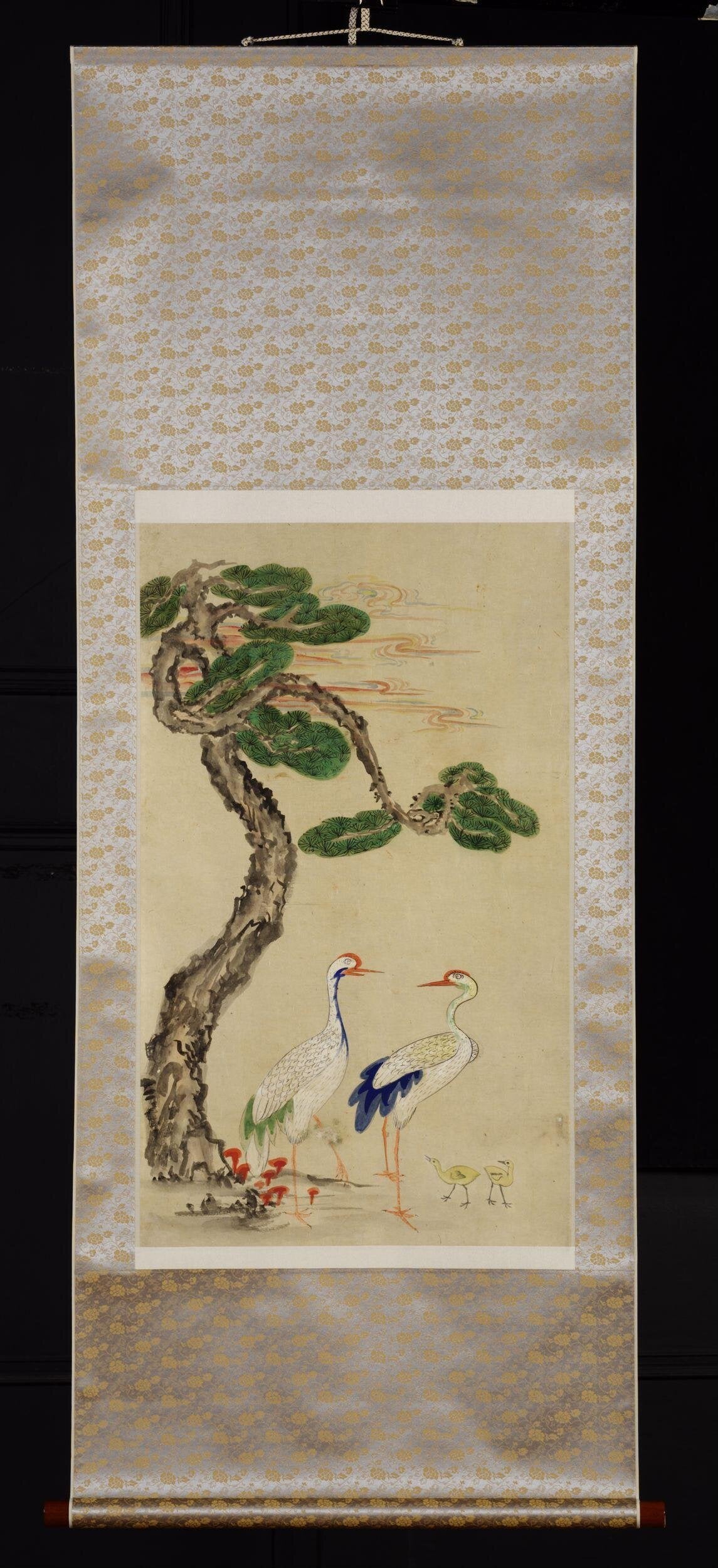FREE Shipping on all product orders over $75! Promo Code: FREESHIP Shop Now

| # | Contents |
|---|---|
| Title | Hanging Scroll |
| Subject | Pine Tree, Crane |
| Creator | Unidentified Korean artist |
| Format | Paper painted with ink and mineral colours |
| Type | Hanging Scroll |
| Description |
Two cranes and two young chicks stand beneath the sprawling branch of a pine tree in this Korean hanging scroll from the 19th century. The scroll is an example of Korean folk painting (minhwa) and demonstrates the kaleidoscope of colour and exuberance of form typical of the genre. Found in the formal settings of palaces as well as in the homes of aristocrats and commoners, folk paintings have a strong connection with the lives of ordinary people. During the Choson period (1392–1910), folk paintings took as their subjects a wide range of motifs. The subject matter depended on the sex, age and social standing of the person in whose room the painting was to be displayed. Paintings of birds and flowers often decorated women’s quarters, whereas images of books and scholars’ utensils were appropriate for a scholar’s study. The pine-and-crane motif occurs frequently in East Asian art and is associated with longevity. In this case, the paired cranes may symbolise a wish for a happy marriage. |
| Publisher |
Given by Kang Collection, Inc. https://collections.vam.ac.uk/item/O97405/hanging-scroll-unknown/ |
| Rights | V&A museum |
| Accession Number | FE.4-2003 |
| Period | Joseon Dynasty (1392-1910) |
| Culture | Korean |
| Geographic Origin | Korea |
| Medium | Paper painted with ink and mineral colours |
| Dimensions | Length: 146.05cm Width: 55.88cm |
| Collection |
East Asia Collection
|